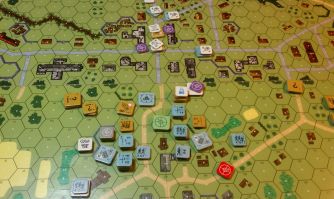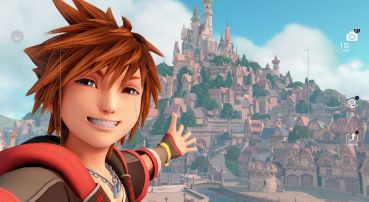Can Realism in Games go too Far?
New technology has allowed for unprecedented levels of realism in modern games. While this has undoubtedly led to some incredible games, it can also be detrimental. This article looks at when to use realism to help your game, and when it can hurt.

 The following is a reproduction, and has been modified for this site. The original article, and many more, can be found at RemptonGames.com
The following is a reproduction, and has been modified for this site. The original article, and many more, can be found at RemptonGames.com
Games, both digital and tabletop, have been undergoing an unprecedented explosion of creative growth over these past few decades. In Video Games the advancement of technology has allowed for incredible leaps forward in what is possible in this medium. As for tabletop games, the past few decades have brought wave after wave of innovative designs, and modern board games are able to push the boundaries in ways that have never been seen before.
One huge area of advancement has been the steady improvement of realism in games. Video games have gone from simple text-based adventures to massive high-definition worlds with hundreds of hours of content to explore. On the other hand, the growth of the “hobby gamer” market has allowed tabletop game designers to explore realism in a way that, while not unprecedented, is reaching a much larger audience than ever before.

“Still doesn’t feel realistic enough” – some old wargamer, probably
I believe that this move towards greater realism has, for the most part, resulted in better games across the board. However, I also believe that pursuing realism for its own sake does not necessarily make a game better, and can often be counterproductive. In this article I want to look at why realism is not always the answer in games, when it should not be used, and when it can have the greatest impact in improving your game.
Magical Realism
“Realism” in games is not a single, unified idea. Instead, the concept of realism can be applied to numerous different aspects of a single game, and the amount of realism can vary in each. You can have realism in artwork, realism in mechanics, realism in character, and emotional realism. Each of these areas has places where realism is beneficial, and places where they can detract from your game.
Lets take the example of visual (or graphical) realism. Game graphics and artwork have been getting better and better every year, particularly in the video game space. When you think of modern video game graphics, odds are the first thing your mind jumps to are the incredibly detailed and realistic worlds of games like Destiny 2, Red Dead Redemption 2, and Far Cry 5.
However, while all of these games look great I don’t believe it is necessary to push your hardware to the brink of exhaustion trying get maximum realism just to have a good game. Exhibit A – the Nintendo Switch. Nintendo hardware has been notoriously underpowered since the Wii, their games have not been able to match the level of graphical fidelity. However, despite this lack of power they are still able to create not only incredibly fun games, but incredibly beautiful games as well.

Still one of the most gorgeous games around, and it runs on a Wii U
Epic Real Time
Realism is not a black and white choice – “do I want to be realistic, or not”. Instead, it is a spectrum, with infinite shades of variation between completely abstract and completely realistic. So, really, the question is not “when should realism be used” but “how do you determine the right level of realism for your game”?
As discussed in the previous section there are many different types of realism, and each require various different considerations. In this section I am going to look at a few of these types of realism and examine some of the aspects that must be taken into account.
Visual Realism
One major thing to keep in mind when deciding on a visual style for your game is “what do these visuals convey about my game”? The level of visual detail and accuracy can affect a player’s expectations for your game in other areas such as character, story, and mechanics. For example, if your game has a highly realistic visual style players will likely expect the mechanics to match.
Players will expect a realistic-looking shooter to have more authentic ballistics, with authentic levels of accuracy and kickback. On the other hand, if your shooter game has a more stylized visual aesthetic players might expect a more unique take on shooting mechanics. They will be more lenient about the authenticity of the shooting mechanics, and will have a higher tolerance for unrealistic or even goofy weapons and attacks.
Similarly, players will expect worlds and characters that appear more realistic to behave in a more realistic way. Silly antics that fit perfectly well into a game like Katamari would feel very out of place in a game like Dark Souls. Realism is not the only aspect of a games visual style that can set these expectations – features like color, cultural influences, and lighting can all have an impact as well – but the level of realism certainly plays a major part.
Mechanical Realism
Mechanics are one area where I believe realism should almost always take a backseat to gameplay. On the one hand, it is practically impossible to make a video game world that corresponds 100% with the real world. The real world is simply full of so much detail, randomness, and possibility that trying to mimic that in a virtual world is a fools errand.
To illustrate this point, lets just take the potential actions I could take at this very moment. Right now I am sitting on a couch typing on a laptop. However, even in this simple situation I have a million possibilities for actions. Sure, I have choices about what to type, but I also have the ability to scratch my nose, wiggle my toes, or stand up and throw my laptop out a window.

I could do this, but then I’d have to re-type everything
Odds are if I was playing a video game some of these possibilities would be programmed into the game, but most of them will not be. The key is not to try and give your players every possibility, but to make sure that the possibilities you do give them are as interesting and fun as possible.
There are also a limited number of buttons on a controller or keyboard, and if you provide your player with too many options at once the controls can become overly convoluted.
On the other hand, just because you are providing your player with a possible action does not mean that action has to be 100% realistic. Lets take a simple example – running around. In the real world if you want to turn a corner while running you will either need to slow to a stop, turn, then start running again, or you will have to make an arc. Real runners cannot turn on a dime, because momentum won’t allow them to.
In a video game, however, players expect characters to respond to their inputs almost immediately. Because of this, characters tend to be able to stop and turn while running much more quickly than they would in real-life, because it feels smoother to control. Controlling a character that moves more realistically would simply feel slow and cumbersome.
This is just one example of how making mechanics less realistic can improve your gameplay, but there are dozens more. Some, such as saving and respawning after death, are so baked into our perception of video games that we don’t even think about them. Others, such as fast travel and allowing characters to carry far more than would be realistic, simplify the games and prevent them from getting bogged down.

You don’t want to make your character use the bathroom, unless you are…actually, not even then
At the end of the day it is not a question of whether you will simplify and abstract your mechanics, but how and where. If you are making a racing game you might try to make your driving mechanics feel as real as possible, but its likely that your mechanics for upgrading your vehicle will be much more abstract.
Character and Story Realism
In contrast to the previous section, this is one area where I believe striving for realism can have some of the biggest benefits for your game. Humans are social animals, and we are designed to interact with and recognize other humans. We instinctively know when a character is behaving unrealistically, and it can break our suspension of disbelief and ruin our immersion in the game.
The reason I am grouping character and story realism together is because I believe that every good story is driven by its characters. The characters have motivations and goals that cause them to take actions, and these actions drive the plot forward. Therefore in order to create a satisfying story it is necessary to have characters with realistic personalities and motivations.
As with all things, this rule has some caveats and exceptions. Depending on the type of game your character might be extremely simple, with very little personality. They might also have extremely loud, outlandish personalities that would not seem to fit the traditional definition of “realistic”. That is okay, as long as it fits the tone of the game and players understand why they are doing what they do.

I have to do….something! Because…reasons?
Take Mario for example. In the early Mario games (and to some extend even the more recent ones) Mario has basically no personality. However, he does have a motivation – to rescue Princess Peach – and it is this motivation that drives the action of the game forward.
Historical and Cultural Realism
For this category, I think that the amount of realism you choose to include in your game is very dependent on the type of game you are making. Some games, such as the Assassin’s Creed series, pride themselves on having a high level of historical and cultural accuracy. However, I do not believe that this level of accuracy is necessary for all, or even most, games.
That being said, if you are including elements of a culture that are not your own, I would caution you to do enough research to make sure that you are using those cultural elements in a way that is not disrespectful to the original culture. Even if it is entirely unintentional, taking parts of another culture can be a minefield and can result in negative press for your game.

I AM SO OFFENDED!!!
An example of this can be found in The Legend of Zelda: Ocarina of Time. In the original version of the game the Fire Temple used a song from a sound library that they later discovered was an Islamic prayer chant. While it is unclear exactly how much controversy this song actually created, what is known is that Nintendo chose to remove the song from all future printings of the game.
I am not saying you must choose to either be completely culturally accurate or not include cultural elements at all. I am simply saying that if you choose to include historical or cultural elements you should be aware of how that element is traditionally used, and be intentional about how and why it is included.
Until Next Time!
That is all I have for this week. If you enjoyed this article, check out the rest of the blog and subscribe on Twitter, Youtube, or here on WordPress so you will always know when I post a new article. If you didn’t, let me know what I can do better in the comments down below. And join me next week for a new video article, with my thoughts on Kingdom Hearts 3!
Read more about:
BlogsAbout the Author(s)
You May Also Like













